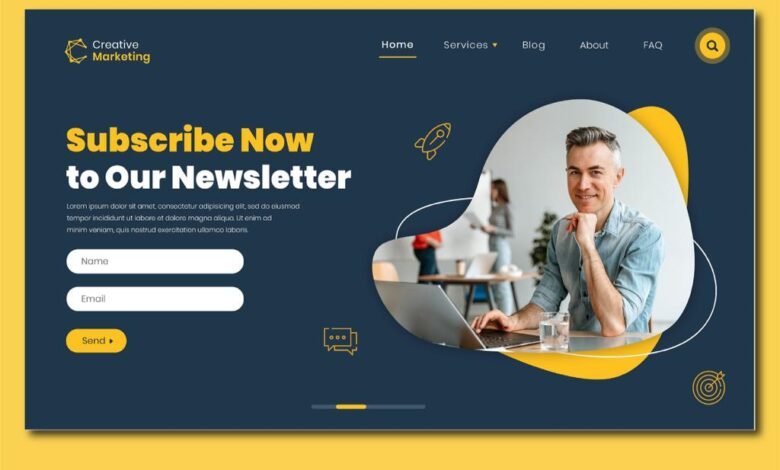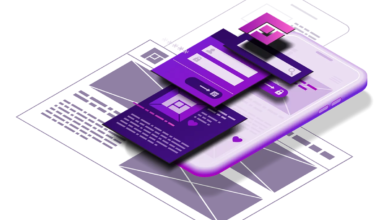
In this blog, we will discuss the best practices and tips on designing user-friendly websites. In today’s world, when a site’s success is heavily dependent on the quality of the user’s experience, it is vital to create a website that is easy for anybody to use. Websites that draw in visitors and hold their attention are the focus of this all-inclusive guide. Companies in need of assistance in developing a distinctive online identity can benefit from teaming up with an established website designing company in Gurgaon that specializes in these areas.
Understanding Your Audience
Knowing your target demographic is the first step in creating a user-friendly design. A design that speaks to its intended audience is the result of careful research into their wants, requirements, and habits. Make sure your design choices satisfy actual user expectations by using user personas, which are fictional characters based on your usual or ideal users. To confirm and improve your design decisions, it is crucial to incorporate user feedback via analytics, user testing, and surveys.
Design and User Experience
A user-friendly website relies on a straightforward layout that allows for easy navigation. Users are more likely to find what they need on a clean, uncluttered page. Make sure the menu is always easy to see and follow the F-pattern design idea, which follows the eye’s natural movement across the page and is compatible with consumers’ reading patterns across different cultures.
Content Clarity and Readability
The display of content determines the level of user engagement, so it is king. Keep your writing to a minimum while still capturing the attention of your target demographic. Choose legible fonts, organize your information using headings and bullet points, and provide ample white space to break up large blocks of text to improve readability.
Mobile Optimization
Mobile optimization is now a must-have due to the meteoric rise in smartphone web usage. A fluid experience on all devices is guaranteed by a responsive design that adapts to all screen sizes and orientations. The primary goal of designing with mobile devices in mind is to make sure that the most important features and data are easily accessible and easy to use on smaller screens.
Speed and Performance
People will leave your website in droves if it takes too long to load. Minifying CSS and JavaScript files, compressing pictures, and making use of browser cache can all help your website load faster. One option to accelerate content distribution to users all around the globe is to employ a Content distribution Network (CDN).
Easy Accessibility
Making your website accessible ensures that it can be used by all users, including those with disabilities. Create an accessible website by adhering to the Web Content Accessibility Guidelines (WCAG). This involves making sure there is enough color contrast, making sure there are text alternatives for non-text information, and making sure the content can be navigated using a keyboard.
Visual Design and Aesthetics
User perception and engagement can be greatly influenced by your website’s visual appeal. Make strategic use of high-quality images and videos without negatively impacting your site’s performance, and use color schemes that are reflective of your brand and improve readability. You may make your site easier to navigate and less cognitively taxing by making good use of whitespace.
Interaction and Engagement
Microinteractions and other interactive components can greatly improve the user experience by responding to the user’s activities with visual cues or feedback. Feedback tools, such as contact forms and surveys, promote user engagement and supply useful information, while clear and attractive calls to action (CTAs) direct users towards the intended actions.
Confidentiality and Safety
Since trust is key to keeping visitors around, protecting their privacy and security is of the utmost importance. Secure your user data with SSL certificates and make sure your data processing abides by privacy regulations like GDPR. Make your privacy policies clear and be forthright with users about the data you collect from them.
Testing and Optimization
Making a website that is easy to use is something that never ends. Make use of analytics tools to monitor user activity and spot problem areas, and conduct A/B testing to compare various design components. In order to maintain your website in line with what users need and expect, it is recommended to regularly update it based on user input and performance analytics.
In summary
In addition to attracting visitors, an engaging and user-friendly website helps to keep them, which in turn contributes to the site’s success. You can make a website that stands out in this digital era by knowing your audience, making sure your material is clear, making it fast and optimized for mobile, and concentrating on visual design, interactivity, accessibility, security, and continuous testing.
If you want your website to be competitive and relevant, you should adopt these best practices. They will improve your site’s accessibility, search engine optimization, and general performance, and they will also enrich the user experience.
Thanks: Articlemia



